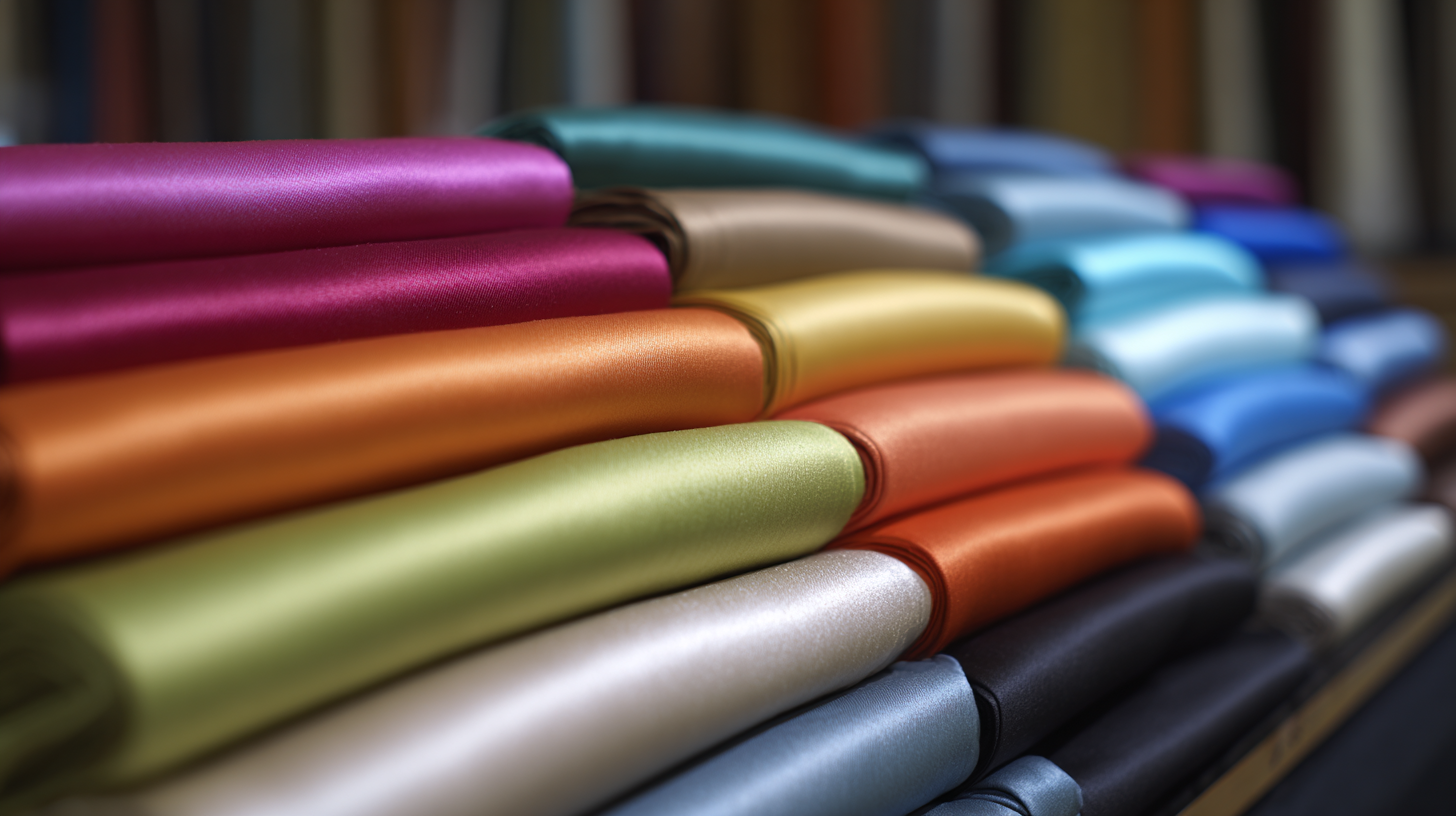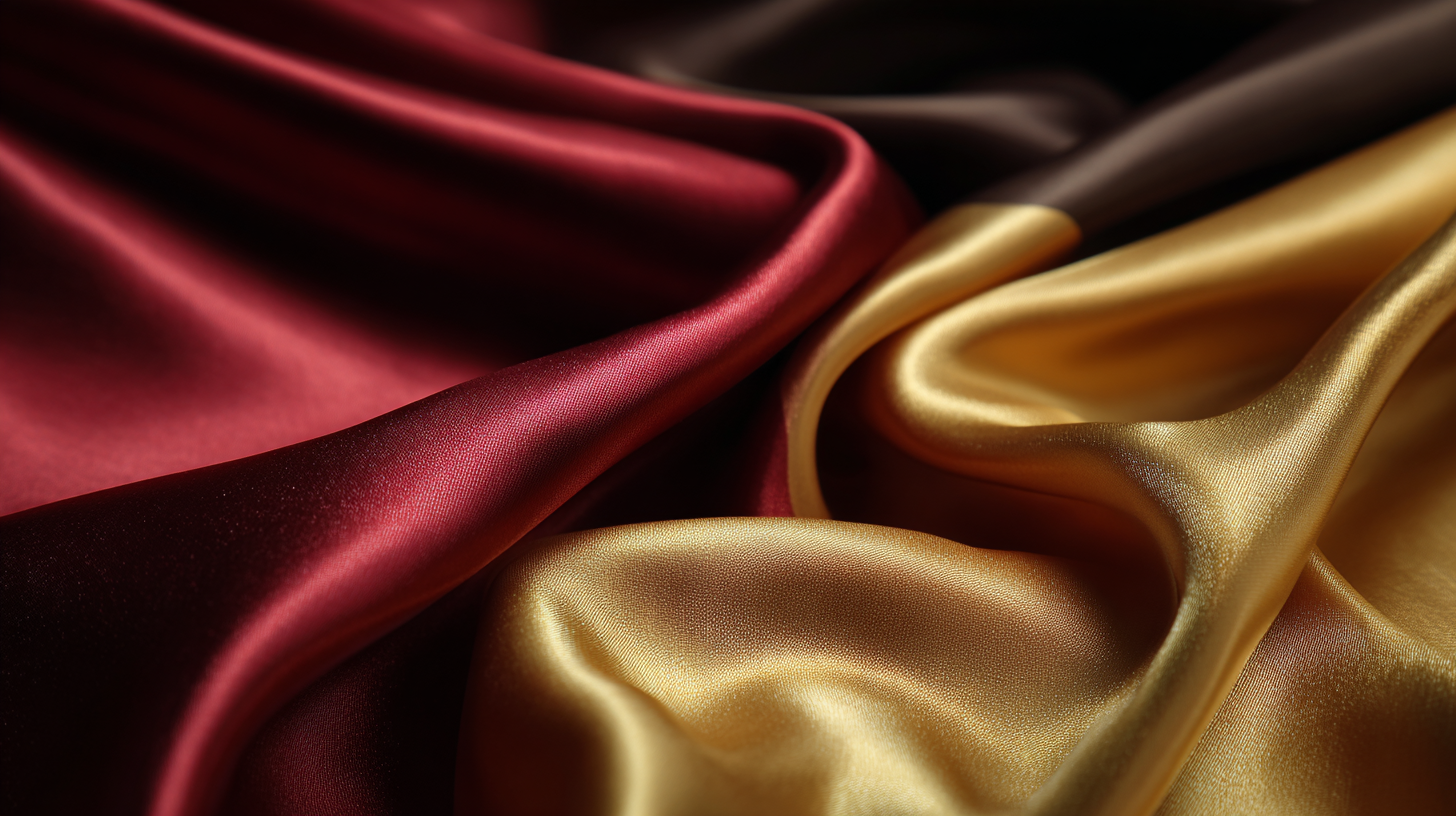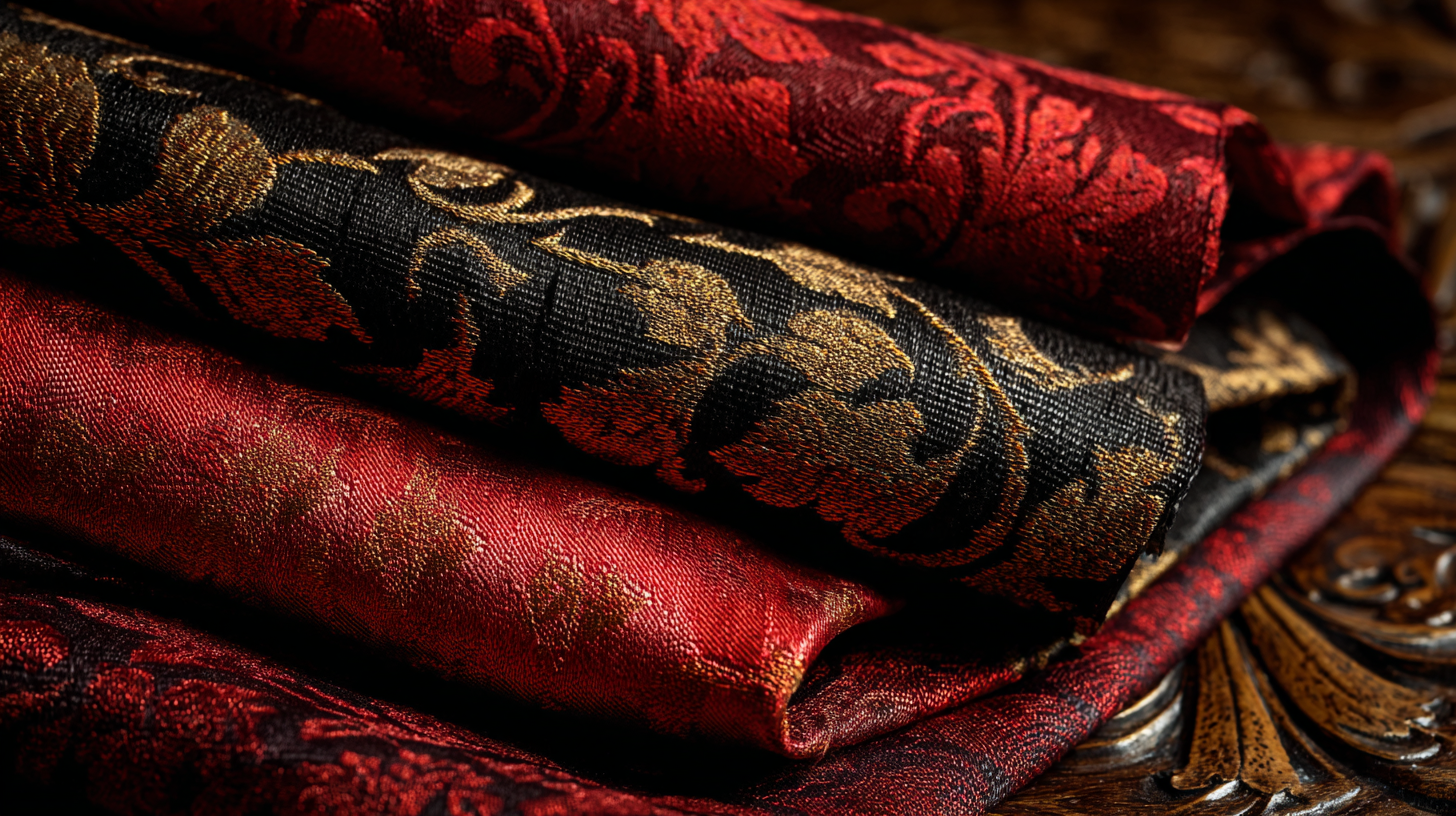In the world of luxury textiles, Silk Satin Fabric stands out for its opulent sheen and sumptuous feel, making it a preferred choice among leading global manufacturers. According to a recent industry report by Grand View Research, the global silk fabric market was valued at approximately $18.57 billion in 2020 and is expected to expand significantly, driven by increased demand in the fashion and interior design sectors.

However, sourcing high-quality Silk Satin Fabric can pose challenges, including fluctuations in raw silk prices and variations in quality among suppliers. As brands strive to meet consumer expectations for sustainable and ethically produced materials, it becomes crucial to identify reliable manufacturers that maintain the finest standards in Silk Satin Fabric production. This blog will delve into the leading players in this specialty market, highlighting the essential considerations for sourcing the best materials.
The rich history of silk satin fabric production in China dates back thousands of years, intertwining with the nation's cultural and economic development. This luxurious material, prized for its smooth texture and elegant sheen, has its roots in ancient China, where silkworm cultivation and weaving techniques were first perfected. The production of silk satin was not merely an artisanal craft; it was a state-sponsored industry that played a vital role in trade, particularly along the historic Silk Road. This trade route not only facilitated the exchange of silk and other goods but also fostered cultural interactions that shaped civilizations.
As centuries passed, the artistry of silk satin production evolved, incorporating advanced weaving methods and intricate design techniques. Chinese artisans developed methods to create stunning patterns, making silk satin highly sought after by nobility and wealthy merchants around the world. The Qing Dynasty particularly saw a flourish in silk production, solidifying the reputation of Chinese silk as the finest available. Today, leading global manufacturers continue to source silk satin from China, upholding its legacy while meeting the increasingly sophisticated demands of the modern market. The blend of tradition and innovation ensures that silk satin remains a timeless favorite in the realm of fashion and interior design.
Silk satin, cherished for its luxurious feel and stunning sheen, remains a staple in high-end fashion and interior design. According to the latest data from the Global Silk Market Report, the silk fabric segment is expected to reach a market value of over $1.5 billion by 2025, driven by growing demand in both apparel and home textiles.
Leading manufacturers such as China’s Shengze Silk and India’s Vankar Group are at the forefront, innovating in production techniques to enhance the quality and sustainability of silk satin. These companies focus not only on traditional methods but also on eco-friendly practices, as consumers increasingly prioritize sustainability.
A comparative analysis reveals that while Chinese manufacturers dominate in terms of production scale and export capacity, Indian firms are gaining a competitive edge through certifications and ethical practices. The Sustainable Apparel Coalition indicates that brands sourcing from these manufacturers report higher customer satisfaction and loyalty. Furthermore, the innovation in digital printing technology, as seen at manufacturers like Tissage de la Mure in France, enables designers to push boundaries in pattern development, making silk satin even more desirable.
As the market evolves, the balance between tradition and modern sustainability will define the future of silk satin production.

Sourcing quality silk satin from leading Chinese factories can be a rewarding venture for businesses looking to enhance their product lines. With China being a key player in silk manufacturing, it’s vital to understand the nuances involved in the sourcing process. Begin by identifying reputable manufacturers with a proven track record in producing high-quality silk satin. Look for certifications and online reviews that can assure you of their reliability.
Tips: Always request fabric samples before making bulk orders. This step allows you to assess the texture, durability, and color before committing to a supplier. Additionally, establish clear communication with potential factories to discuss your specific needs and production timelines. It’s essential to build a rapport and ensure that your vision aligns with the manufacturer’s capabilities.
Another critical factor is understanding the pricing and payment terms. Negotiating transparently can lead to better deals, especially when placing larger orders. Consider the logistics involved in shipping and customs clearance, as these can significantly impact your overall costs. By taking a strategic approach to sourcing silk satin, businesses can secure top-tier materials that will elevate their offerings in the marketplace.
| Manufacturer Location | Annual Production Volume (Meters) | Minimum Order Quantity (Meters) | Fabric Weight (GSM) | Certification Standards |
|---|---|---|---|---|
| Suzhou, China | 1,500,000 | 500 | 90 | OEKO-TEX, ISO 9001 |
| Hangzhou, China | 2,000,000 | 300 | 100 | GOTS, ISO 14001 |
| Guangzhou, China | 750,000 | 400 | 80 | OEKO-TEX, SGS |
| Shenzhen, China | 1,200,000 | 200 | 95 | ISO 9001, GOTS |
In the realm of silk satin fabric manufacturing, China stands out not only for its heritage and craftsmanship but also for its commitment to sustainability practices. As reported by the International Silk Association, approximately 60% of the world's silk is produced in China, where manufacturers are increasingly adopting eco-friendly methods. These include utilizing organic silk farming techniques that minimize the use of harmful pesticides and implementing water recycling systems in production processes. By focusing on sustainable practices, these manufacturers are contributing to a greener textile industry, addressing both environmental concerns and consumer demand for responsible sourcing.

Tips: When sourcing silk satin fabrics, look for suppliers who prioritize sustainability. Check for certifications such as OEKO-TEX® or GOTS, which indicate adherence to environmental and social criteria. Additionally, inquire about their water management practices and the sources of their raw materials to ensure you're supporting eco-conscious manufacturing.
Moreover, the recent market trend shows that businesses embracing sustainable practices not only gain consumer trust but also enhance their brand reputation. According to a survey by McKinsey & Company, 67% of consumers consider sustainability when making fashion purchases. Consequently, partnering with manufacturers that prioritize eco-friendly processes can provide a competitive edge in today’s market, aligning profitability with social responsibility.
The silk satin fabric industry is witnessing transformative changes driven by innovation and market trends. As bridal gowns and luxury sleepwear continue to gain traction globally, manufacturers are focusing on new fabric technologies that enhance both aesthetics and functionality. With the Global Bridal Gowns Market projected to reach USD 60.4 billion by 2034, driven by a CAGR of 6.7%, the demand for high-quality silk satin is expected to soar. This growing interest is not just limited to bridal wear; the luxury bedroom linen market is also expanding, with a forecasted size of USD 4.73 billion by 2024 and a steady growth rate, indicating a shift towards more sophisticated materials.
In parallel, the lingerie market, valued at USD 90.1 billion in 2023, highlights a notable preference for luxurious fabrics such as silk satin, which enhance both comfort and appeal. The increasing consumer awareness of sustainable and ethically sourced materials is further influencing manufacturers to innovate in fabric production, focusing on eco-friendly processes without compromising on quality or style. As these trends unfold, the future of silk satin looks promising, offering endless possibilities for designers and consumers alike in the global marketplace.
